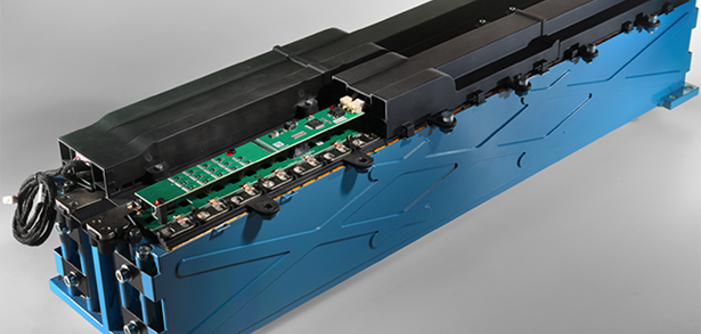Aachen-based FEV, a service provider in vehicle and powertrain development for hardware and software, says it has developed a novel, high-performance battery system for hybrid vehicles using a “cell-to-module” approach.
The battery system has a particularly high-power density of 2 kW/kg, enabling 100kW of power with just 2kWh of energy and a weight of only 50kg, enabling power hybrids to be optimally supported.
The feasibility of the battery concept was demonstrated and validated by FEV in collaboration with Volvo. The concept is based on a central, function-integrating T-bone element for the mechanical structure of the battery, with integrated cooling, and is said to provide a cost, weight and package-optimized modular design.
“This significantly reduces the number of components and assembly steps,” said Stefan Pischinger, CEO, FEV Group. “The extrusion process selected for the function-integrating T-bone structural element ensures a high degree of flexibility, providing further positive scaling effects for successful cost reduction. In addition, the compact design allows stacking of multiple modules.”
The cells are attached to both sides of the T-bone structure with a thermally conductive adhesive. For the electrical insulation of the cells to the T-bone carrier, a powder coating is applied. Both the layer thickness of this coating and that of the thermally conductive adhesive are applied in such a way that the thermal contact resistance between the coolant and the battery cells is minimal.
To compensate for any tolerances of the cells over the length of the T-bone structural element and to additionally electrically insulate the battery cell housings from each other, a self-adhesive compression foam is applied between each battery cell. To mechanically fix the cell packs to the carrier, they are pressed to a uniform length by means of two end plates and then fixed to the end pieces of the T-bone structural element via screws through the end plates.
Sensor cabling as well as slave units are placed centrally between the cell contacts while air flow for additional cooling of the cells is guided through the module cover. The air ducts run parallel to the slave units via the busbars. The module cover thus also performs several functions to further reduce both the number of individual components and the weight of the modules. Thanks to the through-flow cooling channels inside the T-bone, the battery cells are cooled from the side and from the bottom.
FEV says the functional integration of the cooling system into the structural component reduces both the size and weight of the battery. In addition, the busbar cooling system enables high-power densities through targeted management of cell temperatures at the ‘hotspots’.


